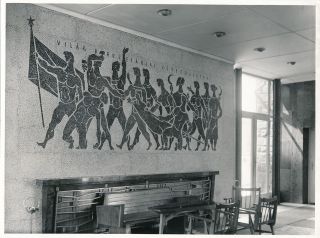‘Cold War’
What Will Be Already Exists: Temporalities of Cold War Archives in East-Central Europe and Beyond
… of self-historicization. The contributions give knowledgeable insights into the transition of Cold War art networks and institutional landscapes. Edited by Emese Kürti and Zsuzsa László Texts by Zdenka Badovinac, Judit Bodor-Roddy Hunter, David Crowley, Lina Džuverović, Daniel Grúň, Emese Kürti, Karolina Majewska-Güde, Kristine Stiles, Sven Spieker and Tomasz Załuski. The open-access electronic version of the book can be accessed here. On the cover: György Galántai and …
Cold War Modernisms
Following the research on the work of György Konecsni, which concluded in 2024, the research on Cold War Modernisms is moving along new research directions, based primarily on the records of the Lectorate of Fine and Applied Arts in KEMKI ADK. The deeper processing of the Design Center, namely the Industrial Design Information Center, added to the collection in 2023, has begun, while sub themes such as the relation between abstraction and public space, textile art and public space are …
Art During the Cold War
… This comprehensive research project examines the role of fine arts in the context of the Cold War in the postwar period between 1945 and 1975. The projects within this programme take an interdisciplinary approach, at the intersection of art history, exhibition history, and cultural diplomacy (soft power), in order to illuminate the artistic nodes of bilateral and regional international relations and to examine the memory of the Holocaust in fine arts in the context of Cold War …
The Oeuvre of György Konecsni
Cold War Modernisms György Konecsni is known primarily for his applied graphic work. He also worked in many other fields and areas, however, creating autonomous paintings, stamp designs and illustrations, and also receiving commissions for fairground and monumental art projects. Based on the artist’s estate, which has been preserved and looked after by his heirs, beyond this well known image …
Art During the Cold War
Representations of the Holocaust in the Cold War Eastern Bloc: the Early Decades – conference, Berlin, Freie Universität, June 5–6, 2023




